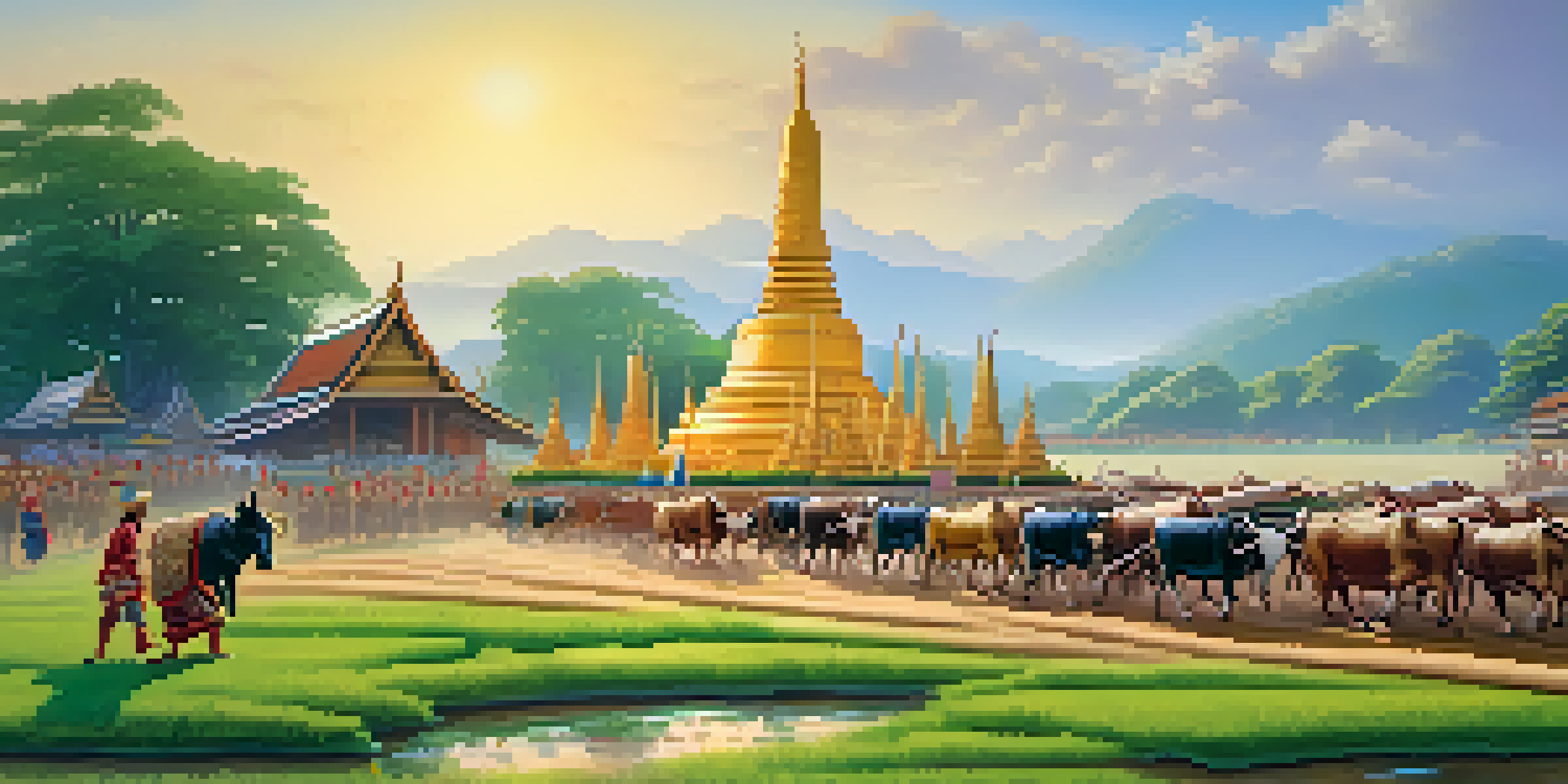Royal Ploughing Ceremony: A Thai Agricultural Tradition

Introduction to the Royal Ploughing Ceremony
The Royal Ploughing Ceremony, known as 'Raek Na', marks the beginning of the rice-growing season in Thailand. This ancient tradition blends culture, agriculture, and royal involvement, showcasing the deep-rooted connection between the monarchy and farming. Celebrated annually, it serves as a reminder of the importance of agriculture to Thailand's economy and heritage.
Historical Background of the Ceremony
This ceremony dates back centuries and is believed to have originated in the Sukhothai period, around the 13th century. It was initially a royal rite performed by kings to ensure good harvests and prosperous farming seasons. The ceremony symbolizes the king's role as the protector and provider for the nation, emphasizing the importance of agriculture in Thai society.
Cultural Significance of the Ceremony
The Royal Ploughing Ceremony highlights Thailand's deep-rooted agricultural traditions and the monarchy's role in supporting farmers.
The Rituals and Activities Involved
During the ceremony, a royal plough is drawn by sacred oxen, symbolizing the beginning of planting. The event includes various rituals, such as offering rice grains and fruits to the spirits, seeking blessings for a bountiful harvest. Observers can witness traditional music, dance, and the vibrant atmosphere that accompanies this significant occasion.
The Role of the Monarchy
The Thai monarchy plays a pivotal role in the Royal Ploughing Ceremony, reinforcing its significance within the culture. The king or a representative performs essential rituals, demonstrating the monarchy's commitment to supporting farmers and agriculture. This involvement fosters unity and respect between the royal family and the Thai people, especially those connected to farming.
Rituals Foster Community Spirit
Public participation in the ceremony promotes unity and shared purpose among farmers and community members.
Symbolism of the Sacred Oxen
The sacred oxen used in the ceremony are not just animals; they symbolize strength, fertility, and agricultural abundance. Before the event, the oxen are well-fed and cared for, representing the respect for nature and the agricultural cycle. After the ploughing, the oxen are offered a variety of grains, showcasing gratitude for their role in sustaining life.
Significance of the Ceremony in Modern Times
In today's context, the Royal Ploughing Ceremony serves as a crucial reminder of Thailand's agricultural roots. It also raises awareness about the challenges faced by farmers in contemporary society, such as climate change and market fluctuations. By preserving this tradition, Thailand honors its history while addressing modern agricultural issues.
Modern Relevance of Tradition
The ceremony serves as a reminder of Thailand's agricultural roots while addressing contemporary challenges faced by farmers.
Public Participation and Community Involvement
The ceremony is not just a royal affair; it actively invites public participation, drawing crowds from various regions. Farmers and community members gather to witness the rituals, fostering a sense of togetherness and shared purpose. This inclusivity reinforces the ceremony's significance as a cultural event that transcends social boundaries.
Conclusion: The Enduring Legacy of the Ceremony
The Royal Ploughing Ceremony is more than just a farming event; it encapsulates Thai culture, history, and community spirit. As agricultural practices evolve, this ceremony continues to bridge the past and present, reminding everyone of the vital role farming plays in society. Its enduring legacy ensures that the traditions of the past remain relevant and respected in modern Thailand.